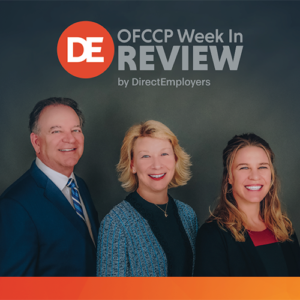 The DE OFCCP Week in Review (WIR) is a simple, fast and direct summary of relevant happenings in the OFCCP regulatory environment, authored by experts John C. Fox, Candee Chambers and Jennifer Polcer. In today’s edition, they discuss:
The DE OFCCP Week in Review (WIR) is a simple, fast and direct summary of relevant happenings in the OFCCP regulatory environment, authored by experts John C. Fox, Candee Chambers and Jennifer Polcer. In today’s edition, they discuss:
- Biden Creates a White House Gender Policy Council
- “Women Have Borne the Brunt of Pandemic-Related Layoffs & Job Losses”
- Integrated Telework Policy for Employees With & Without Disabilities
- Understanding Neurodiversity in the Workplace
- VETS Seeks Comments on the VETS-4212 Report
- Affirmative Action Plan Verification…Coming Soon?
- Biden Administration Proposes to Rescind Trump FLSA Joint-Employer Rule in Most Recent “Whiplash” Change to Legal Standard
- USDOL Seeks Public Comment on its Proposal to Withdraw the Recent Trump Rule Defining Which Workers are Independent Contractors Under FLSA
- EEOC Will Open its EEO-1 Component 1 Collection Portal in April
- Paid Students May Or May Not Be Employees Subject to the NLRA
- The “Flip-Flop Report” – Scorecard of the Biden Administration Executive Actions
Monday March 8, 2021: Biden Creates a White House Gender Policy Council
On International Women’s Day, President Biden issued Executive Order 14020 titled: “Executive Order on Establishment of the White House Gender Policy Council.” The Council’s stated purpose is to “coordinate Federal Government efforts to advance gender equity and equality.”
President Biden also appointed two Co-Chairs to lead the Council: Jennifer Klein, a former senior adviser to Hillary Clinton when she was the First Lady and Secretary of State, and Julissa Reynosa, who was Ambassador to Uruguay in the Obama Administration and is currently the Chief of Staff to first Lady Dr. Jill Biden. Ms. Reynosa will continue in her role as Dr. Biden’s Chief of Staff. Ms. Klein will serve full time as the Council’s Chair and Executive Director. Members of the Council the Executive Order designates include a large list of the senior manager of virtually every Cabinet and major federal agency, including the Secretary of Labor and the Chair of the Equal Employment Opportunity Commission.
OFCCP Director Jenny Yang has said she hopes to participate in the work of the Council, especially since she aims to make compensation equity perhaps her highest priority during her tenure at OFCCP.
The Executive Order charges the Council to submit to President Biden by September 24, 2021 a “Government-wide strategy for advancing gender equity and equality in the United States and, when applicable, around the world.” EO 14020 also suggests the “Strategy” “should include recommendations on policies, programs, and initiatives that should be proposed, passed, or implemented to advance gender equity and equality in the United States and around the world.”
OFCCP Director Yang’s work at OFCCP on compensation equity proposals will necessarily have to mirror and marry with the “Strategy” the White House Gender Policy Council will develop. The more interesting question is whether the “tail will wag the dog” since OFCCP is 40 years down the path in the development of compensation equity enforcement policies and programs. And because pay equity enforcement has been either a primary goal, or the primary goal, of the last three OFCCP Directors stretching back 20 years, OFCCP has more institutional knowledge about discrimination law policies in the workplace compensation context and more systemic pay equity enforcement experience than any other federal agency.
Monday, March 8, 2021: “Women Have Borne the Brunt of Pandemic-Related Layoffs & Job Losses”
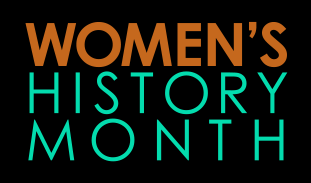
However, she is also quick to recognize that,
“Women have borne the brunt of pandemic-related layoffs and job losses. As of February 2021, the unemployment rates for Black women and Latinas in the United States stood at 9% and 8.5%, respectively. Nearly 1 in 7 women with disabilities (13.9%) was unemployed in February 2021 – almost double the unemployment rate for women with disabilities before the start of the pandemic (7.4%).”
Chair Burrows summarizes,
“As we build back our economy, re-open businesses, and hire workers, we must ensure that women and workers of color are not left behind.”
See also President Biden’s Proclamation of Women’s History Month in which he spotlights a pivotal time in our history,
“Sixty years ago, when former First Lady Eleanor Roosevelt confronted President John F. Kennedy about the lack of women in Government, he appointed her as head of a new commission to address the status of women in America and take on discrimination in all of its forms. We have made significant progress in the United States, thanks to the persistence and tireless work of countless women.”
Monday, March 8, 2021: Integrated Telework Policy for Employees With & Without Disabilities
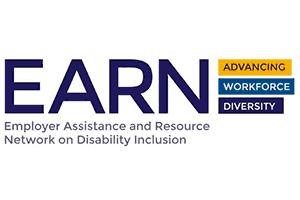
To avoid confusion and inefficiency, employers can adopt an integrated telework policy applicable to all employees. The Employer Assistance and Resource Network (EARN) on Disability Inclusion is here to help! The latest resource titled, Adopting an Integrated Telework Policy for Employees With and Without Disabilities, is an 11-page policy brief that helps employers navigate the framework for creating a policy that meets everyone’s needs.
Monday, March 8, 2021: Understanding Neurodiversity in the Workplace

The Employer Assistance and Resource Network (EARN) on Disability has a landing page dedicated to Neurodiversity in the Workplace. From the basics of defining neurodiversity through the recruitment process and beyond, you are guaranteed to learn something new.
Learn more about neurodiversity in topics such as:
- Business & Employee Benefits
- Job Descriptions, Interviews, and Evaluations
- Accommodations
- Management, Peer Training, and Mentoring
- Hiring Initiates & Partnerships
- Autism @ Work: Employer Roundtable
DE Members – did you catch the first DE Masterclass Disability RoundTable? If not, be sure to check it out, as the topic was Autism. The recording is available within DE Connect. On this coming Wednesday, this month’s DE Masterclass Disability roundtable features TBI and PTS with experts from across the country. Register here!
Wednesday, March 10, 2021:VETS Seeks Comments on the VETS-4212 Report

Comment On These Questions (and/or make any other comments you wish VETS to see):
- Is the collection of information necessary for the proper performance of the functions of the Department?
- Will the information have practical utility?
- Will the information be processed and used in a timely manner?
- How accurate are the Agency’s estimates of the burden and cost of collecting the information, including the validity of the methodology and assumptions used?
- How can the Agency enhance the quality, utility, and clarity of the information collection?
- How can the Agency minimize the burden of the collection of information on those who are to respond (i.e., automated collection techniques or other forms of information technology)?
Deadline
The OMB will consider all written comments received on or before April 9, 2021.
What is the VETS-4212?
Short Answer
- VETS = abbreviation of the name of the Agency (see above) that collects and manages the information
- 4212 = the section number of the United States Code that authorizes VETS to demand the form
Long Answer
- The Vietnam Era Veterans’ Readjustment Assistance Act of 1974 (VEVRAA),38 U.S.C. 4212(d), requires Federal contractors and subcontractors subject to the Act’s affirmative action provisions in 38 U.S.C. 4212(a) to track and report annually to the Secretary of Labor the number of employees in their workforces, by job category and hiring location, who belong to the specified categories of “Protected Veterans.”
- VETS uses the VETS-4212 form to gather information about the employment of Protected
- The regulations in 41 CFR part 61- 300 require contractors and subcontractors with a covered federal Government contract entered into or modified in the amount of $150,000 or more to use the Federal Contractor Veterans’ Employment Report VETS-4212 form to report information on their employment of veterans VEVRAA protects.
Covered employers must annually file the VETS-4212 report no later than September 30th.
Thursday, March 11, 2021: Affirmative Action Plan Verification…Coming Soon?

Coming Soon
Affirmative Action Plan Verification Interface (AAVI) is a secure web-based interface created to improve communication and the transfer of Affirmative Action Plan data, between Federal Contractors and the Office of Federal Contract Compliance Programs.
Read the history of this initiative in our previous report when the Agency extended the public comment period.
Note: Is OFCCP also portending a future public Rulemaking and a further Information Collection Request (ICR) to the Office of Management and Budget to require covered federal Government contractors already obligated to create various kinds of Affirmative Action Plans to also now be required to produce those Plans to OFCCP in digital form? OFCCP Rules do not require contractors to submit their AAPs to OFCCP in electronic or digital form, whether in an audit or otherwise. Accordingly, there are several basic administrative building blocks needed before OFCCP can successfully launch the AAP Verification Program OFCCP apparently has in mind. In a world full of computer hackers, Contractor concerns also run very high about the data and privacy protections surrounding any such digital deliveries of employer, employee and union information. In addition, contractor concerns run high about statutory protections from disclosure of the data to the public as the National Academy of Sciences recommended, at least as to employer compensation data, in a formal 2012 Report the Academy issued advising on centralized compensation data collections in response to an EEOC request for the Academy’s advice.
Friday, March 12, 2021: Biden Administration Proposes to Rescind Trump FLSA Joint-Employer Rule in Most Recent “Whiplash” Change to Legal Standard
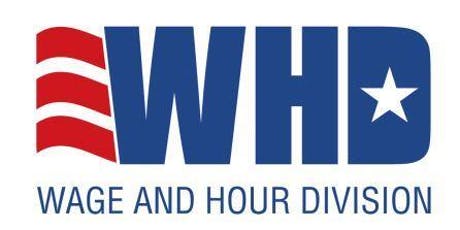
The public has until April 12, 2021, to comment on the DOL’s proposed rescission.
With this action, the Biden Administration has taken its first steps to attempt to systematically dismantle the Trump Administration’s interagency effort to expand liability protections for franchisers and businesses as to the actions of their affiliate entities.
What Was All The Fuss With The Trump Final Rule?
Under the Trump Final Rule the Biden Administration is seeking to rescind, a business or person is a joint-employer with another entity for purposes of wage-hour law if BOTH entities actually, directly or indirectly:
- hired or fired the employee;
- supervised and controlled the employee’s work schedule or conditions of employment to a substantial degree (rejecting the commenters’ suggestion that evidence of supervision on a day-to-day basis alone indicates the existence of a “joint employer”);
- determined the employee’s rate and method of payment; and
- maintained the employee’s employment records.
The Trump Administration published its Final FLSA Rule in coordination with its National Labor Relations Board (“NLRB”) Final Rule (WIR 2/26/20) as to joint-employer relationships. At the same time, the Trump Administration EEOC published its intent in 2019 to issue a proposed Rule regarding joint employer analyses under federal anti-discrimination laws (although no such proposed Rule emerged).
What’s The Beef From The Biden Administration?
The Biden Administration’s proposed rescission of the Trump FLSA Final Rule is based on its claim that the Trump Final Rule is unduly narrow, relies too much on the so-called “control factor,” is contrary to prior Wage-Hour Department guidance, and adopted analyses which the courts have not widely adopted in joint-employer case decisions. DOL’s roll-back proposal also relies heavily on the September 8, 2020, ruling in the U.S. District Court for the Southern District of New York in the case of New York, et al. v. Scalia. That Court set aside the Trump Final Rule’s new FLSA joint-employer standard as “arbitrary and capricious” and inconsistent with the FLSA.
Note: Long-time WIR subscribers will recognize the “arbitrary and capricious” and “not otherwise in accordance with law” findings to be the primary legal standards courts use to overturn federal agency Rulemakings they find to have violated the Administrative Procedure Act.
The New York suit, brought by 17 states and the District of Columbia, successfully overturned the Trump Final Rule as to its interpretation of vertical joint-employer liability (for example, a business obtaining contractors from a staffing agency). At the same time, the New York decision kept n place the non-substantive revisions the Trump Final Rule made in its analysis of horizontal joint-employer liability situations (for example, where an individual works for one company for a set number of hours in a workweek while also working for another company for another set of hours in the same workweek).
Similar to its approach earlier in the day when it sought to withdraw the Trump Administration’s Independent Contractor legal test under the FLSA, the Biden WHD did not propose a joint-employer test or analysis to replace the Joint-Employer Rule it seeks to rescind. Too, like the Biden WHD’s attempted roll-back of the Trump Independent Contractor Rule, the Biden WHD now has two ways forward.
First, if it successfully rescinds the Joint-Employer FLSA Rule, the WHD could decide to make no new Rule, but rather could simply remain with and enforce the current Obama-era joint-employer FLSA interpretations which continue in effect and which the Trump Final (but not yet legally effective) Rule sought to displace.
Alternatively, the WHD could exercise its discretion to attempt to “slingshot” new FLSA interpretations sifted out of the new comments WHD will receive in coming weeks from the public.
What’s Next?
Keep an eye on the New York, et al. v. Scalia case discussed above. The Trump Administration WHD filed an appeal in November 2020 to the District Court’s ruling. That case is still pending, although the WHD has now, of course, changed political hands. There are reasons, however, both for the Biden WHD to now “change sides” and to withdraw the appeal the Trump WHD filed.But, there are also reasons to allow the appeal to go forward. Either way, the Scalia case will likely continue to impact the WHD Rulemaking. If the appeal does not go forward at the suggestion of the Biden WHD as moot, USDOL would lose the benefit of the lower District Court decision to support its attempted rescission of the Trump Rule. (See United States v. Munsingwear, Inc.) If the appeal goes forward to decision, perhaps because the current WHD does not like the court’s “horizontal” ruling and wants to have that portion of the District Court’s decision overturned, one side or the other will then have reason to rejoice and use the decision as more legal cannon-fodder to aim at the other side in the WHD’S ongoing Rulemaking proceeding, and its (likely) ensuing litigation.
What Rule Is WHD Enforcing Now?
In the absence of the Trump Final Rule becoming legally effective because stalled by the new proposed WHD Rule to rescind it, WHD is currently enforcing the joint-employer interpretations the FLSA has been enforcing for years…since the Obama Administration. Nothing has changed, YET, other than that the business community has had a Mr. Toad’s Wild roller coaster regulatory ride. And, just like that popular Disneyland ride, the regulatory ride has thus far ended up exactly where it started: we have all gone in one, long, slow (but exciting!) circle.
Mr. Toad’s Wild Roller Coaster
Have you missed the ride? Or are you so thrilled (or confused you want to ride again?) Not to worry, we’ve got every twist and turn for you to enjoy!
- February 26, 2020: Are They My Employees? NLRB Issued Final Rule Defining Joint-Employer Status Under the NLRA…And the Unions Are Not Going to Like It
- with a bonus blog: Overview of the Trump Administration’s Government-Wide Redefinition of Who is a Joint-Employer
- January 12, 2020: USDOL Announced its Controversial “Joint Employer” Final Rule
And for those die-hard riders, see our March 5, 2018 OFCCP Week in Review where we provide a table breaking down all of the twists and turns back to August of 2015!
Thanks to Jay J. Wang, Esq. from Fox, Wang & Morgan, P.C. for contributing to this article.
Friday, March 12, 2021: USDOL Seeks Public Comment on its Proposal to Withdraw the Recent Trump Rule Defining Which Workers are Independent Contractors Under FLSA

The public has until April 12, 2021, to comment on the DOL’s proposed roll-back of the Trump Final Rule.
As we reported back in September of 2020, the Trump Administration sought to expand who qualified as an Independent Contractor (IC) and would thus be exempt from the FLSA’s wage-hour requirements. The Trump final Rule adopted a new “economic realities” test focused on two core factors. The “economic realities” test is unique to the FLSA and has been a subject of thousands of lawsuits trying to draw a “bright line” as to when a worker (neutral term) is an “employee” subject to the protections of the FLSA and when the worker is an “Independent Contractor” not covered by the FLSA’s protections.
What’s The Beef From The Biden Administration?
In reviewing the various legal tests and analyses courts use to determine Independent Contractor status, the Biden Administration identified several reasons in support of its proposal to withdraw the Trump Final Rule. The proposed withdrawal claims the Trump Rule departed from the FLSA’s text and purpose and/or from FLSA case law.
- First, the Biden Administration’s roll-back proposal asserts that the Trump test elevated two core factors which run contrary to court decisions interpreting the FLSA and which require that no single factor be dispositive when analyzing whether a worker is an independent contractor or an “employee” the FLSA covers.
- Second, the WHD’s proposed roll-back claims the Trump Administration’s Final Rule exaggerated reliance on the role of “control” as one of the determinative factors governing IC vs employee status. The Biden roll-back claims the Trump Rule, if allowed to become legally effective, would reduce the number and kind of workers who would normally otherwise be covered under the FLSA by making the FLSA test for employee status comparable to the more restrictive common law control test. The proposed Biden Administration roll-back argues that courts have held that the Common Law Test is a narrower test finding workers to be ICs when the broader FLSA analyses could find them to be an “employee” subject to the FLSA. A broad definition of the term “employee” is mandated, the Biden roll-back proposal argues, because of the FLSA’s broad definition of the word “employ,” which the Congress purposely intended to put more workers under the protection of the FLSA than under the Common Law legal test for employee status.
- Third, the Trump test’s adoption of a worker’s opportunity for profit or loss as a second core factor to determine IC vs “employee” would reduce the number of workers subject to the FLSA’s protections of “employees” in violation of the FLSA’s scope of coverage.
- Finally, the DOL rejected the Final Rule’s analyses of the costs and benefits of the Rule, as well as its conclusion that the new test provided needed clarity.
If the Biden Administration does eventually rescind the entirety of the Trump Final Rule, the Obama-era Rules in place before the Trump Final Rule revision would remain the law of the FLSA. (Remember, the FLSA Rules which existed before the Trump Final Rule, are still currently in place since the Trump Rule, while Final, has not yet become “legally effective”) Alternatively, the WHD could choose to rescind only some parts of the Trump Rule, although that result is not widely expected.
Thanks to Jay J. Wang, Esq. from Fox, Wang & Morgan, P.C. for contributing to this article.
Friday March 12, 2021: EEOC Will Open its EEO-1 Component 1 Collection Portal in April

The EEOC Press Release also announced its portals will also open for:
- EEO-5 (Public Elementary/Secondary School Districts) Data Collections in July 2021
- EEO-3 (Local referral Unions) Data Collections in August 2021; and
- EEO-4 (State/Local Governments) in October 2021
Note: There is no EEO-1 Component 2 (Hours Worked/Pay Data) collection for either 2019 or 2020 since the EEOC chose last year not to seek to renew its authority to collect those data.
Monday, March 15, 2021: Paid Students May Or May Not Be Employees Subject to the NLRA
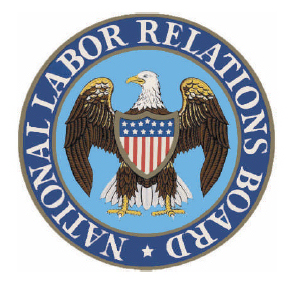
In a news release, the Board stated it “decided to withdraw this rulemaking proceeding at this time in order to focus its limited resources on competing Agency priorities, including the adjudication of unfair labor practice and representation cases currently in progress.”
So, Where Are We?
The NLRB has decided to let case decision law decide the issue whether students paid to work are “employees” subject to the NLRA. If the NLRB persists in its current view that paid students are “employees” subject to the NLRA, this would allow the students, among other things, to unionize and file unfair labor practices. The NLRB has flip-flopped back and forth on the question whether paid students are “employees” or whether they are primarily students.
Short answer: See your labor lawyer for advice.
Longer answer: Advocates arguing that paid students are NOT “employees” within the meaning of the NLRA will cite to the NLRB’s Brown University 2004 decision. Advocates for paid student coverage under the NLRA will cite to the NLRB’s more recent 2016, and currently precedential decision, in Columbia University. The NLRB’s Columbia University decision overruled Brown, found paid student coverage under the NLRA, and expanded the NLRA’s reach over more and varied types of paid students than had occurred in earlier Board decisions finding NLRA coverage.
What’s Really Going On?
The NLRB has flip-flopped on its position on the issue of paid students as “employees” subject to the NLRA going back over 30 years now. Now, they flip flop even on the procedure as to how to derive a position:
“The Board finds that informal notice-and-comment rulemaking is preferable to adjudication with respect to the industry-wide determination whether students who perform services in connection with their studies are “employees” within the meaning of Section 2(3) of the Act.”
That’s what the NLRB wrote in 2019 when the Republican majority on the NLRB published the pending proposed Rule it now wants to withdraw in favor of an adjudicated decision defining the footprint of the NLRA’s jurisdictional reach. So, while there are different Republican Members now in place at the NLRB, they must have read the comments in response to the NLRB’s 2019 Rulemaking, perhaps did not feel too comfortable with that record, BUT then noticed pending University cases raising the paid student question already en route to the Board for decision. So, for the three Republican Board Members, which way you get back to the Brown decision the quickest and legally safest way then becomes the pertinent question: do you take the high-road or the low-road?
Regardless of your politics, and regardless where you come out on the underlying NLRA coverage question, you just cannot like the flip-flop procedures in modern federal agencies. Is there any wonder that federal courts often expressly decline to give any deference in their decisions to the opinion below of the NLRB when one can predict the result before the Board not based on the facts of the case, but rather by simply asking whether the Board was controlled at the time of decision by Democrats or Republicans?
It is the Congress’ intent in passing the at-issue legislation which a federal agency is supposed to dutifully enforce and which view is supposed to prevail…not party politics. A federal agency’s interpretation of the statute it enforces should be a constant over time, regardless of Democrat and Republican administrators coming and going unless and until the Congress changes its mind and amends the statute the federal agency is charged to enforce. And, businesses and colleges and universities need reliability and predictability. Basing employer policies and employment systems on the whims of ever-changing political parties is about as satisfactory as planting a flag on the shifting sands of a windy beach.
Backstory
See our previous story from September of 2019 when the Agency Proposed the Rule.
The “Flip-Flop Report” – Scorecard of the Biden Administration Executive Actions
Given the events of this week, we have updated our scorecard to indicate the tracking of the two pending proposed reversals we report today, as well as the NLRB Reversal.
| Topic | Reversals | Other Executive Actions |
| Coronavirus | 2 | 13 |
| Immigration | 9 | 2 |
| Economy | 3 | 4 |
| Equity | 2 | 8 |
| Environment | 3 | 4 |
| National Security | 0 | 4 |
| Health Care | 1 | 1 |
| Census | 1 | 0 |
| Regulation | 1 | 0 |
| Labor | 1 (2 pending) | 0 |
| Other | 0 | 1 |
Source: The White House, Federal Register
Executive Actions the DirectEmployers WIR Has Reported Since President Biden’s Inauguration
January 2021
- Executive Order On Advancing Racial Equity and Support for Underserved Communities Through the Federal Government
- Executive Order on Preventing and Combating Discrimination on the Basis of Gender Identity or Sexual Orientation
- Executive Order on Protecting the Federal Workforce and Requiring Mask-Wearing
- Executive Order on Revocation of Certain Executive Orders Concerning Federal Regulation
- Resulting in Wednesday, January 27, 2021: DOL “Good Guidance Rule” Goes Out the Window
- Regulatory “Freeze” Pending Review – resulting so far in:
- Equal Employment Opportunity Commission (EEOC) Notice of Proposed Rule Making (NPRM) – Amendments to Regulations under the Americans with Disabilities Act Proposed January 7, 2021
- EEOC NPRM – Amendments to Regulations Under the Genetic Information Nondiscrimination Act Proposed January 7, 2021
- Tuesday, January 26, 2021: Three WHD Opinion Letters Withdrawn:
- FLSA2021-4: Addressing whether a restaurant may institute a tip pool under the FLSA that includes both servers, for whom the employer takes a tip credit, as well as hosts and hostesses, for whom a tip credit is not taken.
- FLSA2021-8: Addressing whether certain distributors of a manufacturer’s food products are employees or independent contractors under the FLSA.
- FLSA2021-9: Addressing whether requiring tractor-trailer truck drivers to implement safety measures required by law constitutes control by the motor carrier for purposes of their status as employees or independent contractors under the FLSA, and whether certain owner-operators are properly classified as independent contractors.
- Friday, February 5, 2021: Tip and Independent Contractor Rules Frozen
- Friday, February 19, 2021: WHD Withdrew Independent Contractor and Truck Driver Sleep Time Opinion Letters
- Friday, February 26, 2021: Tip Rule Delayed to April 30, 2021
- Executive Order on Protecting Worker Health and Safety
- Resulting in Friday, January 29, 2021: Stronger COVID-19 Guidance Available from OSHA
Trickle-Down Events
- EEOC Conciliation drama: Wednesday, January 27, 2021: Policy Differences Erupt: EEOC Pilot Programs End Early–Virtual Mediations Stay
- Termination of the Wage & Hour Division’s “PAID” Program: Friday, January 29, 2021: Biden Wage-Hour Administration Sounding an Early “Enforcement” Theme: Employers Now Back on the Hook for FLSA Violations
February
- Executive Order rescinding Trump’s EO 13801 (“Expanding Apprenticeships in America) and directing federal Executive Branch agencies to promptly consider taking steps to rescind any orders, rules, regulations, guidelines, or policies implementing the Trump Executive Order. (WIR 2/17/21)
March (NEW)
- Friday, March 12, 2021: USDOL Seeks Public Comment on its Proposal to Withdraw the Recent Trump Rule Defining Which Workers are Independent Contractors Under FLSA (story above)
- Monday, March 15, 2021: Paid Students are NOT Employees Per NLRB (story above)
- Friday, March 12, 2021: Biden Administration Proposes to Rescind Trump FLSA Joint-Employer Rule in Most Recent “Whiplash” Change to Legal Standard (story above)
THIS COLUMN IS MEANT TO ASSIST IN A GENERAL UNDERSTANDING OF THE CURRENT LAW AND PRACTICE RELATING TO OFCCP. IT IS NOT TO BE REGARDED AS LEGAL ADVICE. COMPANIES OR INDIVIDUALS WITH PARTICULAR QUESTIONS SHOULD SEEK ADVICE OF COUNSEL.
SUBSCRIBE.
Compliance Alerts
Compliance Tips
Week In Review (WIR)
Subscribe to receive alerts, news and updates on all things related to OFCCP compliance as it applies to federal contractors.
OFCCP Compliance Text Alerts
Get OFCCP compliance alerts on your cell phone. Text the word compliance to 55678 and confirm your subscription. Provider message and data rates may apply.

